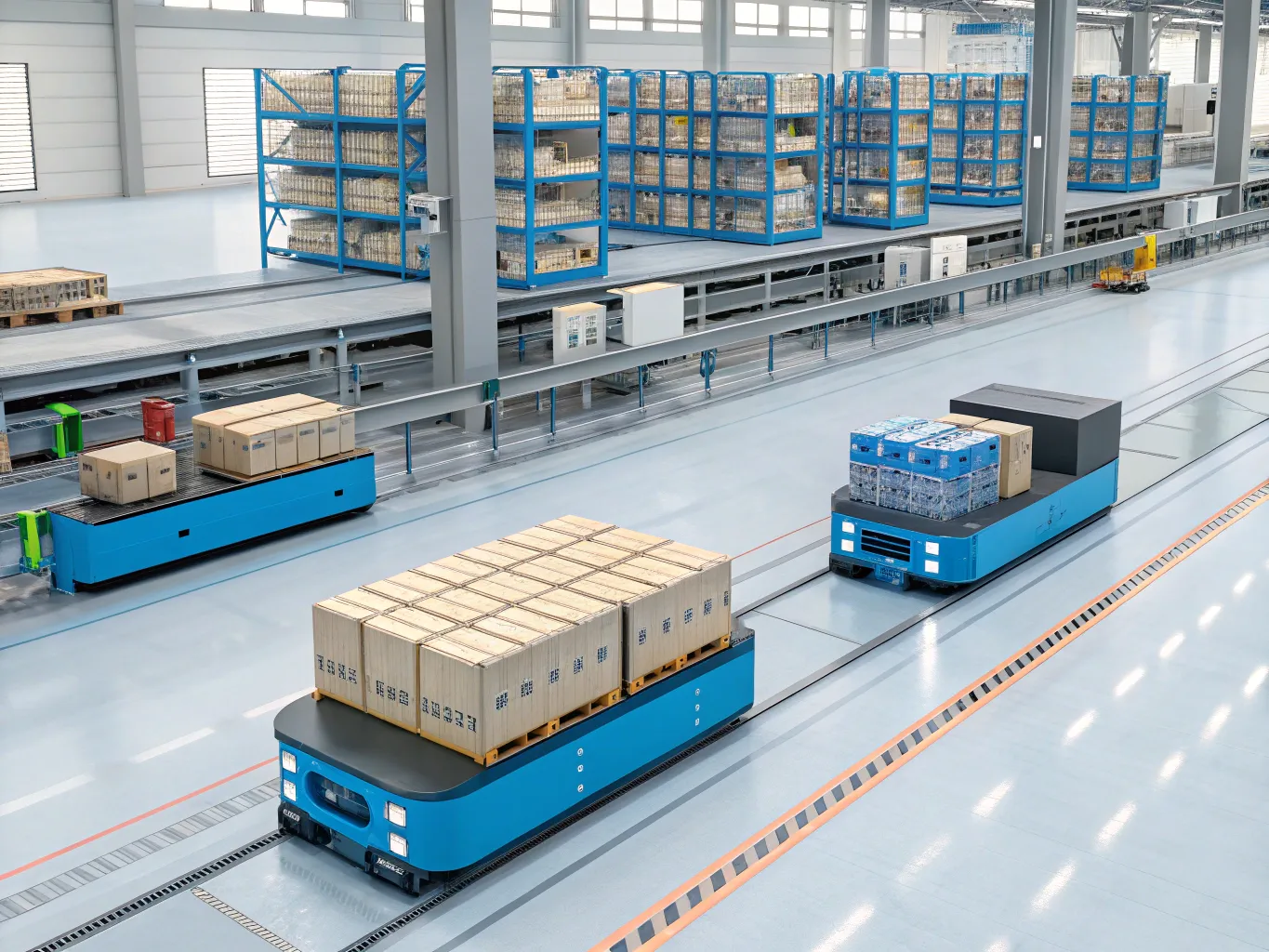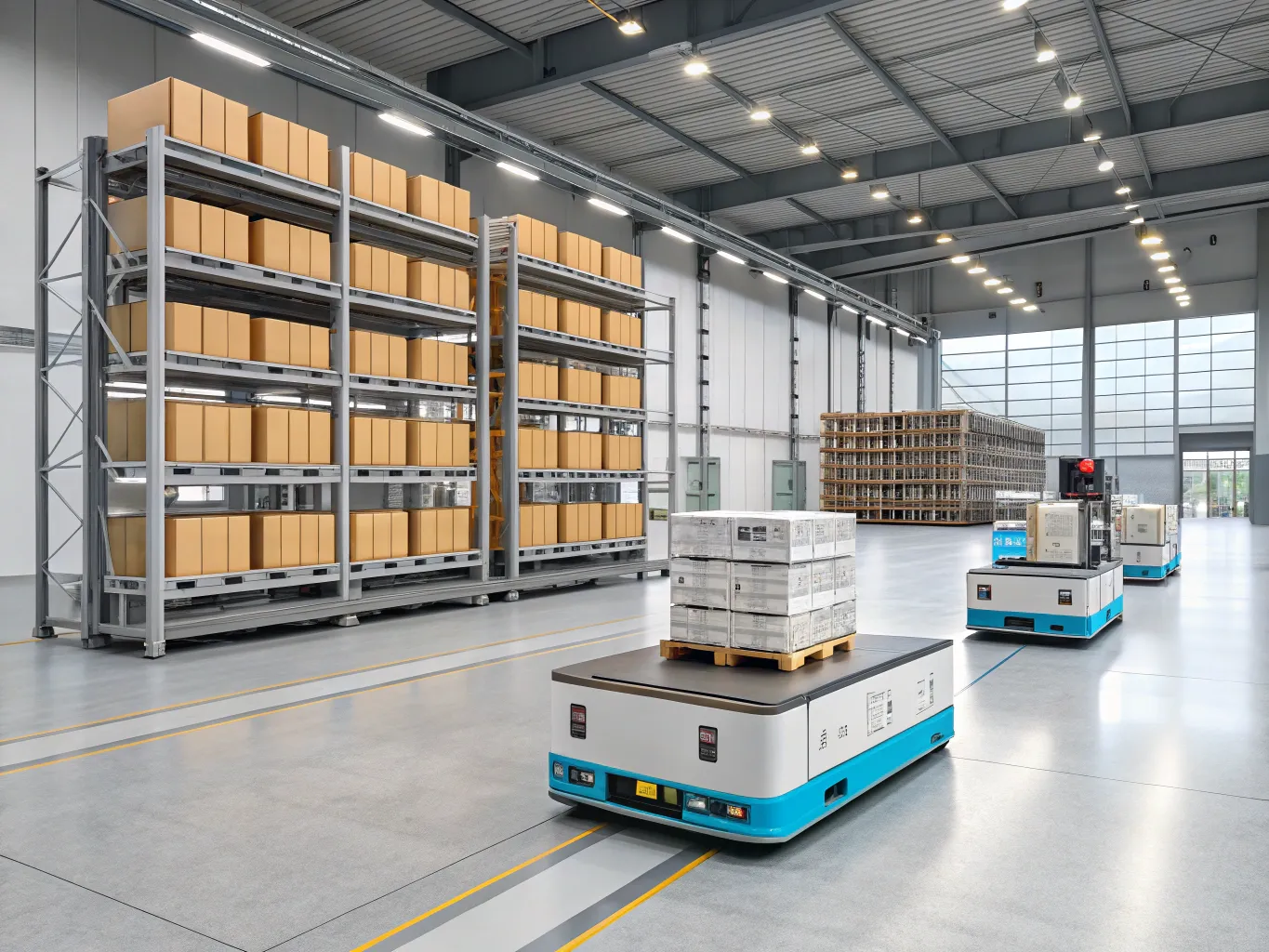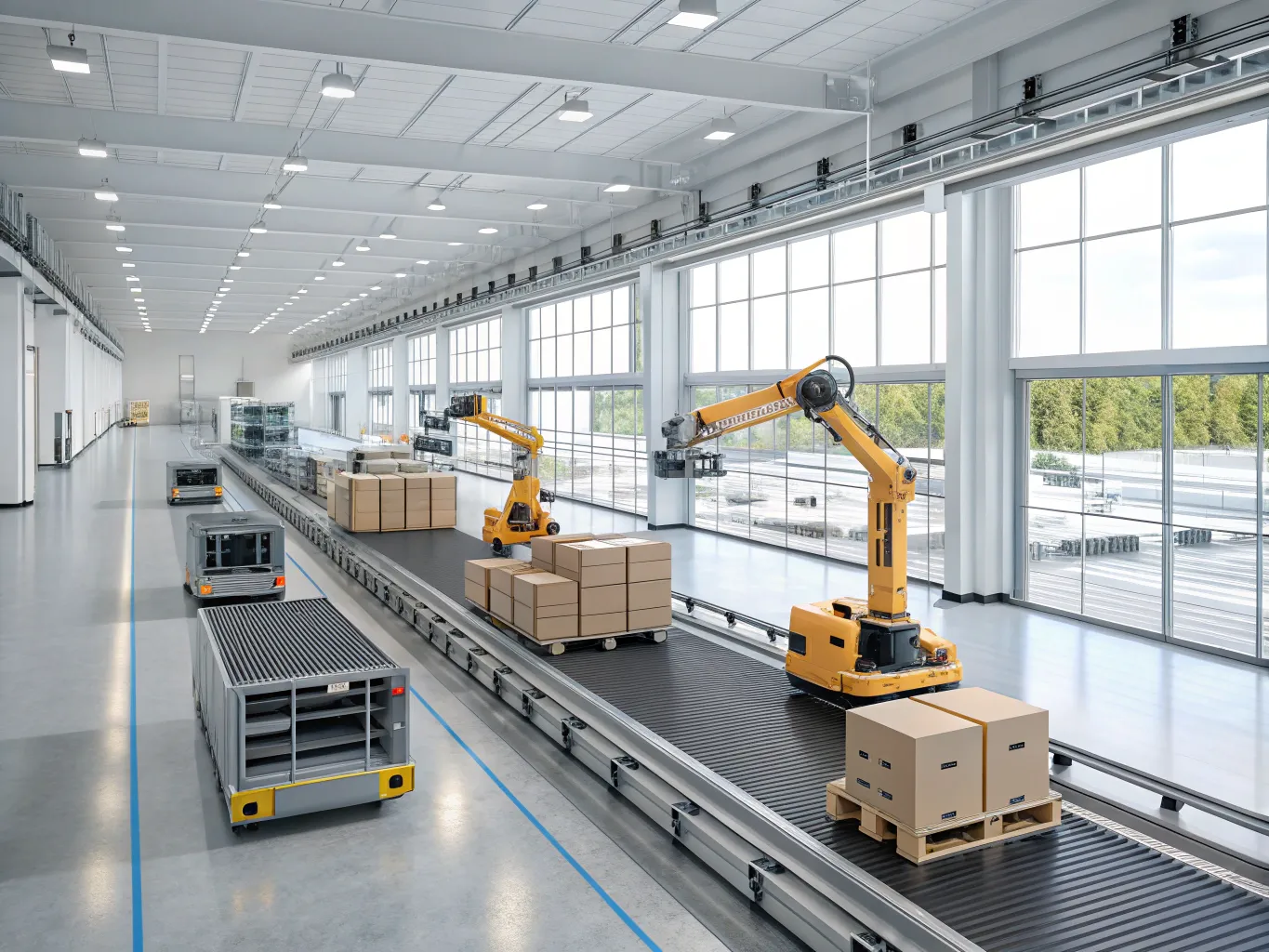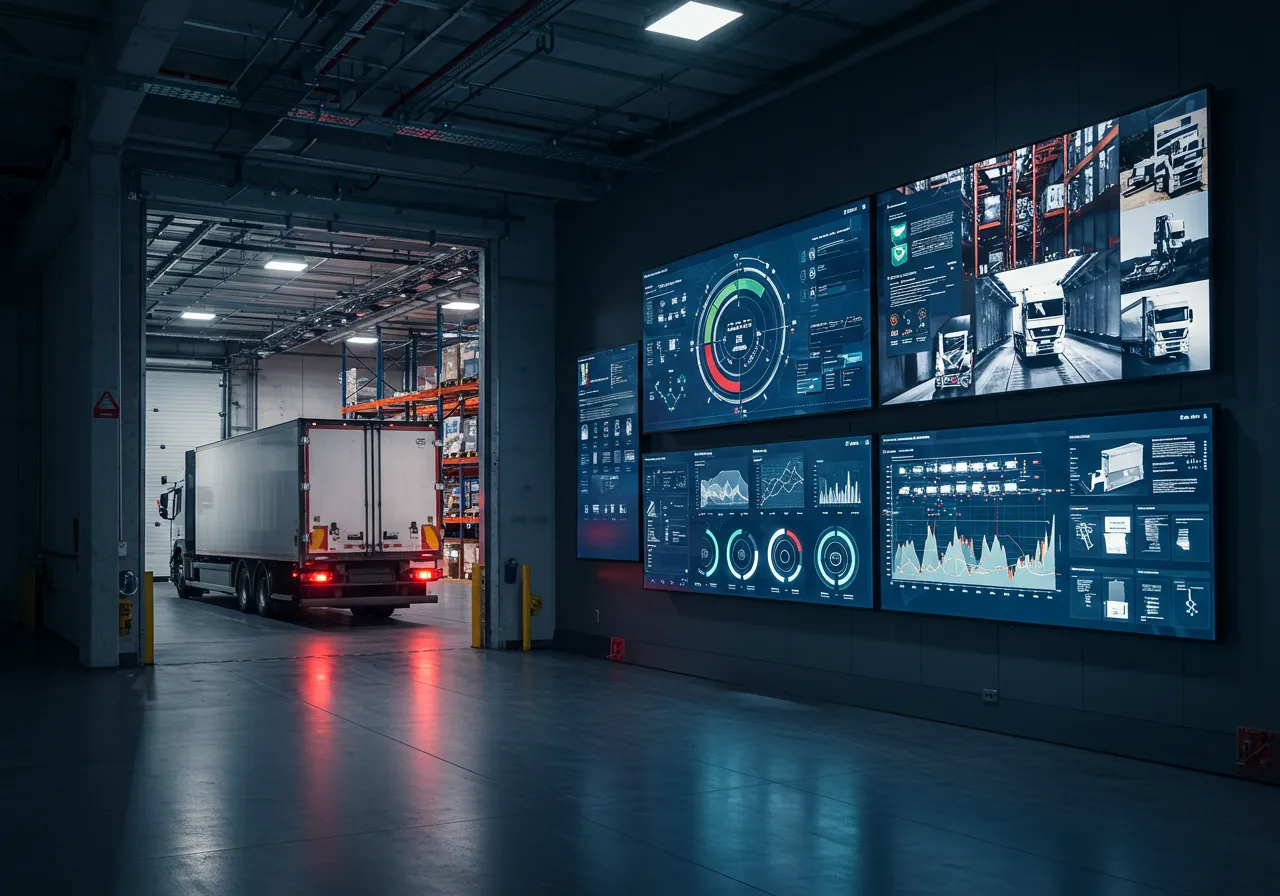
Automate Your Logistics for Precision
Leverage state-of-the-art automation to optimize logistics, boosting operational accuracy by up to 30% while minimizing human error. Enhance supply chain agility and cut transit times significantly.
Precision Through AI-Enabled Automation


Boost Supply Chain Efficiency with Automation
Industries Benefiting from Automation
- Automotive: Within the automotive industry, automation streamlines the parts supply chain, reducing lead times by up to 30%. This enables companies to respond swiftly to market demands. For example, robotic systems in assembly lines enhance production efficiency and reduce error rates, ensuring consistent quality.
- Retail: Automation in retail optimizes inventory management, decreasing stockouts by 20% and improving customer satisfaction. Automated checkout systems and smart shelving solutions ensure accurate stock levels, which are crucial during peak shopping seasons. These innovations allow retailers to adapt rapidly to consumer trends and fluctuations.
- Manufacturing: In manufacturing, automation enhances precision in complex processes, such as CNC machining and 3D printing, leading to a 25% increase in production accuracy. By employing automated quality control, manufacturers can detect defects early, minimizing material waste and reducing costs associated with recalls and reworks.
Core Automation Technologies in Logistics
- Robotic Process Automation (RPA): RPA can transform logistics by automating routine tasks such as invoice processing and freight management, reducing errors by up to 70%. For instance, RPA can automatically update shipment trackers, allowing logistics managers to allocate resources more efficiently.
- Machine Learning Algorithms: By analyzing vast datasets, machine learning can forecast demand and optimize routes, decreasing delivery times by an average of 30%. It is particularly valuable in e-commerce logistics, where predictive analytics can anticipate peak order periods and streamline fulfillment operations.
- Data Integration Platforms: These platforms consolidate information from disparate sources, enabling real-time visibility across the supply chain. By integrating data from sensors, GPS, and ERP systems, logistics companies can enhance decision-making processes, cutting inventory holding costs by 20% and reducing lead times.
Advanced Automation Capabilities
Process Optimization
Leverage data-driven analytics to refine logistics processes, reducing cycle times by 25%. Implement workflow automation to minimize human errors, ensuring consistent quality. This enhancement enables companies to consistently meet customer delivery expectations and improve service levels.
Real-Time Monitoring
Utilize IoT-enabled sensors and GPS technology for continuous tracking of shipments. This provides instant visibility into the supply chain, allowing for proactive issue resolution. Companies report a 40% reduction in delivery delays, enhancing reliability and operational efficiency.
Customer-Centric Solutions
Deploy AI-powered chatbots to automate customer service inquiries, offering 24/7 support. These systems process up to 80% of routine queries, significantly reducing response times. Enhanced customer interaction platforms lead to a 30% increase in customer satisfaction scores.
Predictive Analytics for Demand Forecasting
Use machine learning algorithms to predict supply and demand fluctuations. This enables companies to optimize inventory levels, reduce stockouts, and improve order fulfillment. By forecasting trends accurately, businesses can make data-driven decisions, reducing waste and increasing efficiency.
Enhanced Supply Chain Visibility & Control

Benefits of Automation in Logistics
- Increased Productivity: Automation minimizes manual tasks, doubling productivity in some warehouse operations. Automated guided vehicles (AGVs) can transport materials 24/7, reducing the workload on human resources and allowing them to focus on more strategic initiatives.
- Reduced Errors: By implementing automated inventory tracking systems with RFID technology, error rates in order fulfillment can drop by up to 30%. This ensures higher accuracy in stock levels and reduces costly mistakes, enhancing customer satisfaction in sectors like e-commerce and retail.
- Enhanced Decision Making: Access to real-time data through automated systems supports data-driven decision making. For instance, predictive analytics tools can forecast demand fluctuations, allowing supply chain managers in the pharmaceutical industry to adjust production schedules proactively, minimizing waste and optimizing resource allocation.
Seamless Automation Integration
Transform Your Supply Chain
You may also be interested in
Maximize your potential with our seamless, end-to-end supply chain solutions.

EDI
Enhance accuracy and speed in transactions by integrating EDI, reducing manual errors by up to 90%. Elevate supplier and partner interactions with seamless data exchange, driving efficiency across your logistics network.

Customer Relationship Management (CRM) Integration
Transform your logistics with seamless CRM integration. Improve customer interaction efficiency by 30%, increase order accuracy, and reduce response times, leading to higher customer satisfaction.

Warehouse Automation
Leverage AI-driven analytics to cut inventory costs by up to 30%, optimize stock levels, and boost operational accuracy for seamless supply chain management.